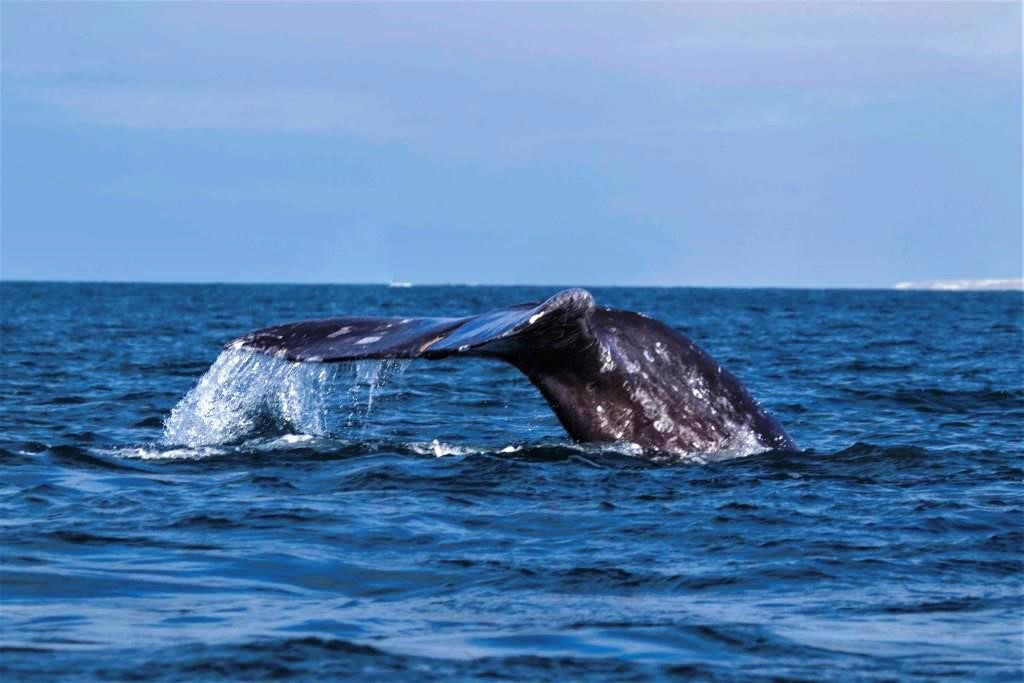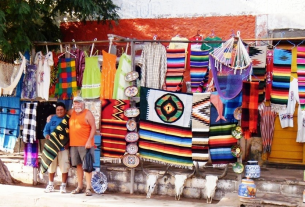By Dan and Lisa Goy on the November 2019 Edition
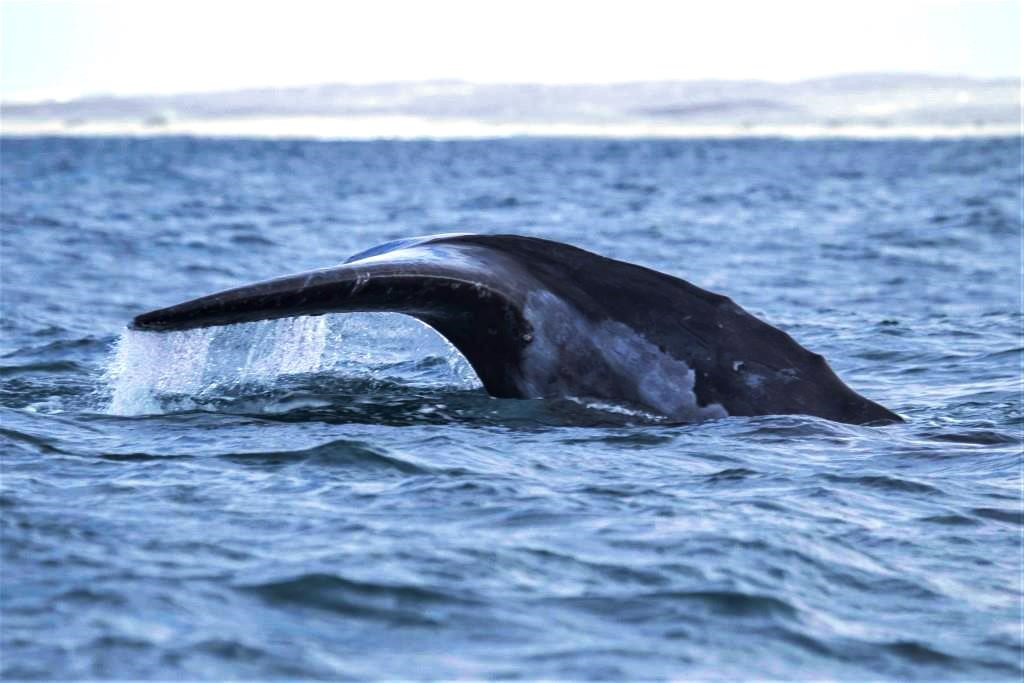
No visit to Baja is complete without a stop in Guerrero Negro, Spanish for Black Warrior. Founded in 1955 when an American by the name of Daniel Ludwig, who also constructed the hotel Acapulco Princess in the port of Acapulco, decided to install a salt works to supply the demand of salt in the western United States.
This lagoon has vast tidal flats full of salt, which makes this area the world’s number one salt producer. The harvest machines are able to collect 2,000 tons of salt per hour.
The salt is transported around the world to the US, Canada, Mexico and Japan. By 1962, they had exported one million tons of salt. We have done the salt tour from Malarrimo, about $20 USD, and well worth the price of admission.
The town is located just south of the 28th parallel that separates the northern state of Baja California, or BC, and southern state of Baja California Sur (South), or BCS.
As you drive south on Mex 1 past Villa Jesús María, you will see a large upright structure which represents an eagle (use your imagination) and an equally large Mexican flag.
Jesús María is a good place to fill up, gas or diesel, as often we have found long lineups or no gas in Guerrero Negro.
As you cross the state border, you will be stopped at an agricultural inspection station. The people there always ask what you have for fruit and sometimes they will inspect your rig. On rare occasions, they may request your travel documents.
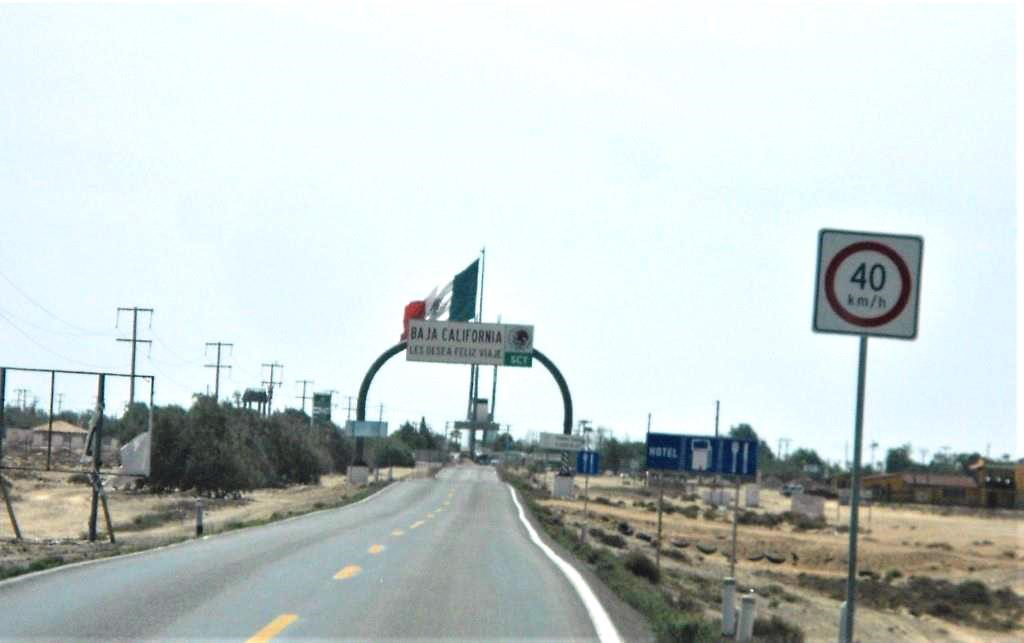
Once across the border, there are three places to stay with your RV: two RV parks and one campground. About 40 minutes from town is the Ojo de Liebre Lagoon (Scammon’s Lagoon) Campground. Only accessible during whale watching season (mid-December thru mid-April), inexpensive and very tranquil, you camp around the edge of the lagoon and can listen to the whales at night; tours are also available.
We have never visited this campground as the drive out has been reported as very rough to hideous. Commonly, RVers who do this journey talk about shaking and rattling as they roll along (not enjoyable in a motorhome). Also remember to keep your pets close as there are lots of hungry coyotes around, so do not leave your dogs out at night!
The other two better choices are the Malarimmo Hotel, Restaurant, RV Park and Tours and Mario’s Tours and Restaurant. We stay at both on our tours that include WiFi. Malarimmo (named after the famous Baja Beach) is where our tour stops when heading south.

They have working showers, an excellent gift shop, a good restaurant, a convenience store and the best Whale Watching Tours on Baja. We stay at Mario’s when heading north. It has fifty (50) pull thru sites which makes it easy in and out. It is a little less expensive and it also has a restaurant, facilities and services that most always work, and they host whale watching tours for folks who are interested in doing this again.
Mario’s has scallop shells you can harvest by the bucket. We have eaten at the restaurant several times with no complaints. You do have to be careful when you plug in. Make sure you check the power.

Guerrero Negro is probably best known to travelers as one place to view the grey whales in Scammon’s Lagoon. This is truly an experience that rivals any major “Wonder of the world”. At $49 per person, this whale watching tour is absolutely extraordinary and unique. The whale mothers often push the ba-bies right up to the boat and you can touch them!
The town is named after an old American whaling ship from Duxbury, near Boston. The ship, called the Black Warrior (Guerrero Negro), grounded in the lagoon near the coast in 1858.
It was during this era that Captain Charles Scammon discovered a prolific grey whale-breeding lagoon which became a choice hunting ground for Yankee and European whalers. Although locally known as Laguna “Ojo de Liebre” (eye of the jackrabbit), this lagoon is better known to boaters from around the world as Scammon’s. The migration of the grey whales to Scammon’s Lagoon is the longest route (5,000-6,000 miles) of any mammal. They start their journey in Alaska and go as far south as Bahía Magdalena, Baja California. Here, the females who conceived the previous year (about half of the females), are ready to give birth.
As the females are fertile every other year, most of the others are ready for breeding. About 1,500 grey whales are born in the Baja lagoons each year, half in Scammon’s Lagoon.
By late December to early January, the first of the grey whales begin to arrive in the calving lagoons of Baja. The first whales to arrive are usually pregnant mothers that look for the protection of the lagoons to give birth to their calves, along with single females seeking out male companions in order to mate.

By mid-February to mid-March the bulk of the grey whales have arrived at the lagoons. It is at this time that the lagoons are filled to capacity with nursing, calving and mating grey whales. The breeding behaviour is complex and often involves three or more animals. The gestation period is about one year, and females have calves every other year. The calf is born tail first and measures about 4 meters in length. It is believed that the shallow waters in the lagoons protect the newborn from sharks.
Throughout February and March, the first grey whales to leave the lagoons are the males and single females. Once they have mated, they will begin the trek back north to their summer feeding grounds in the Bering and Chukchi seas. This round trip of 16,000 – 22,000 km, at an average speed of 5 km/h, is believed to be the longest yearly migration of any mammal.
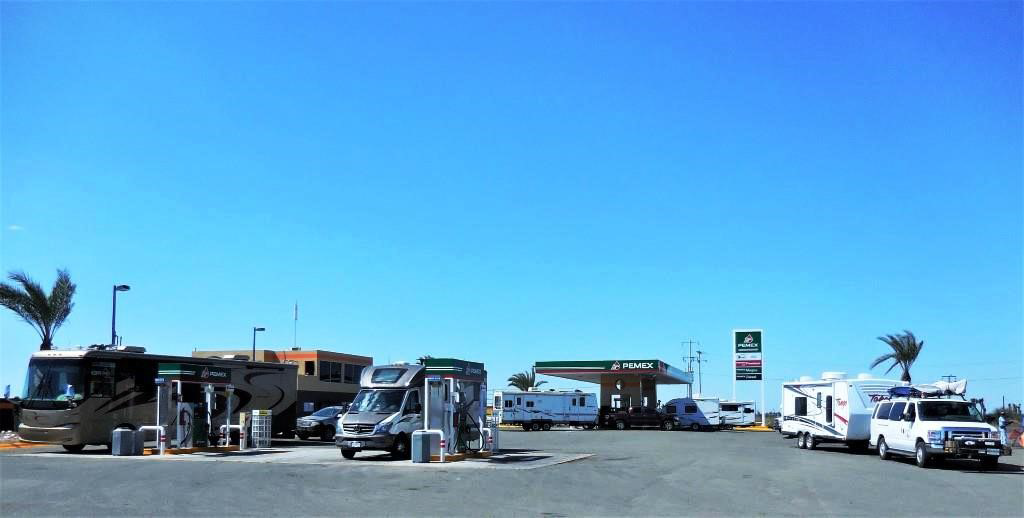
Pregnant females and nursing mothers with their newborn calves are the last to leave the lagoons. They leave only when their calves are ready for the journey, which is usually from late March to mid-April. Often, there are still a few lingering grey whale mothers with their young calves in the lagoons well into May. By late March or early April, a number of grey whales enter Puget Sound and may be seen from Canada and as far south as Everett, Washington, near the mouth of the Snohomish River. A population of about 2,000 grey whales stay along the Oregon coast throughout the summer, not making the farther trip to Alaska waters.
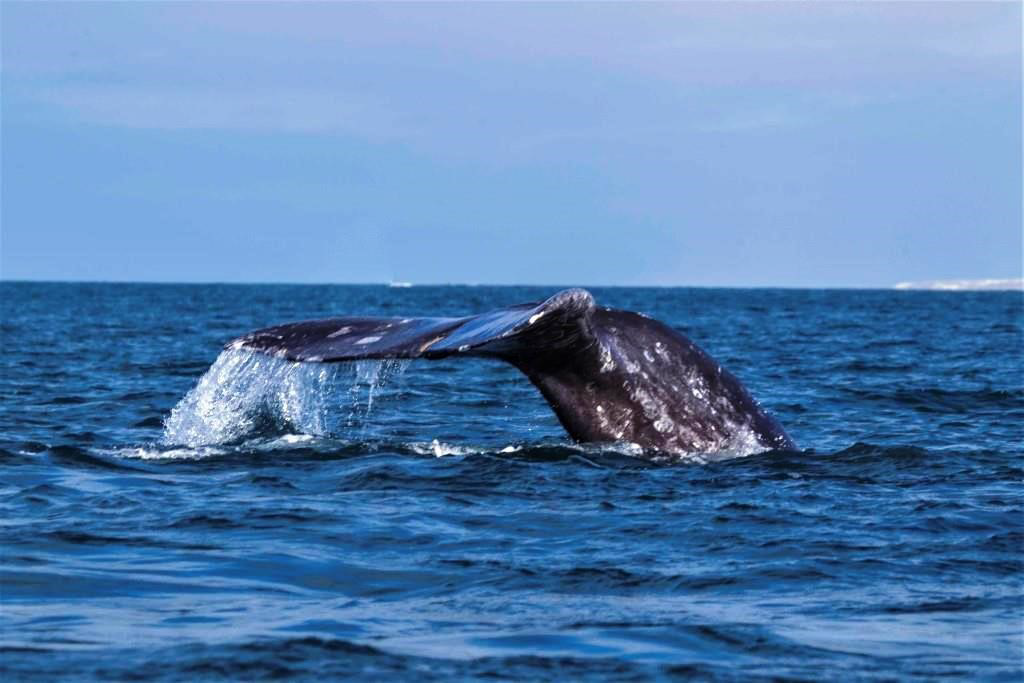
Hunted to the edge of extinction, the grey whale was given partial protection in 1937 and full protection in 1947 by the International Whaling Commission (IWC). Since that time, the eastern north Pacific grey whale population has made a remarkable recovery and now numbers are probably close to their original population size.
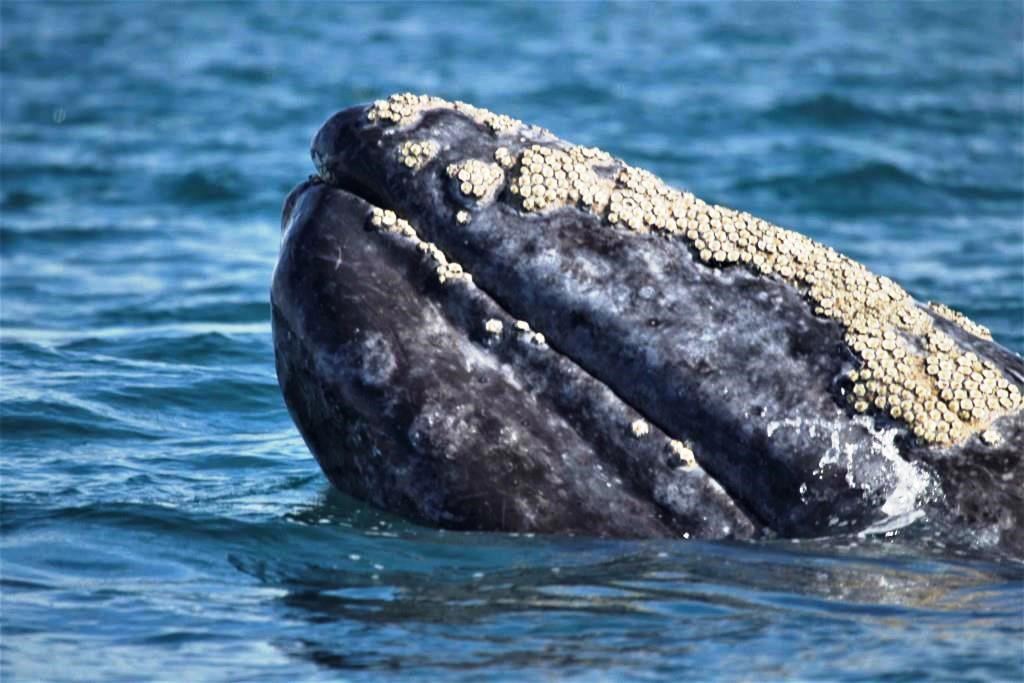
As of 2008, the IUCN (International Union for Conservation of Nature) regards the California grey whale as being of “least concern” from a conservation perspective. In early March, on our last Baja tour of the season, the lagoon often has over 2,500 whales. The water can be like glass and most of our guests end up purchasing “I touched a whale” t-shirts.
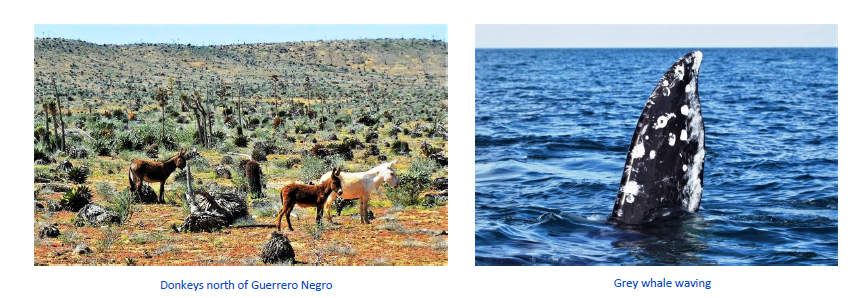
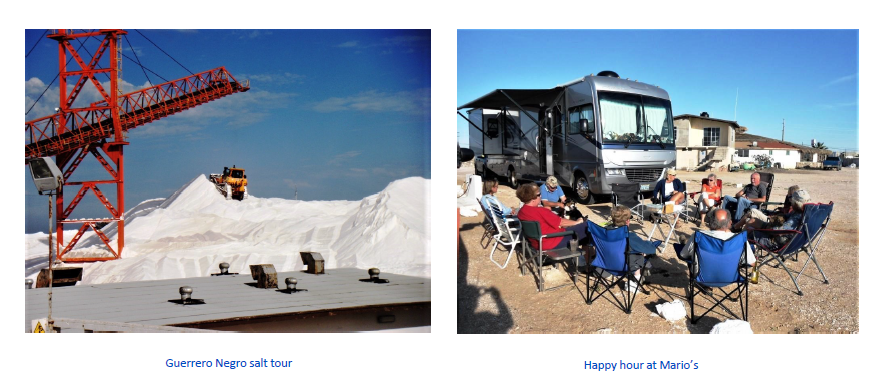
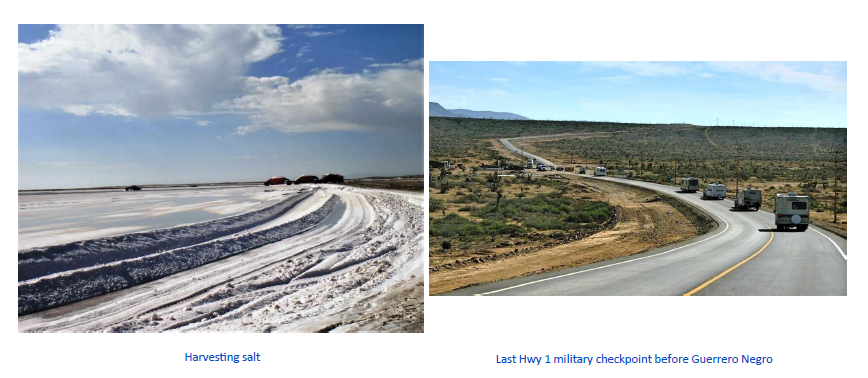
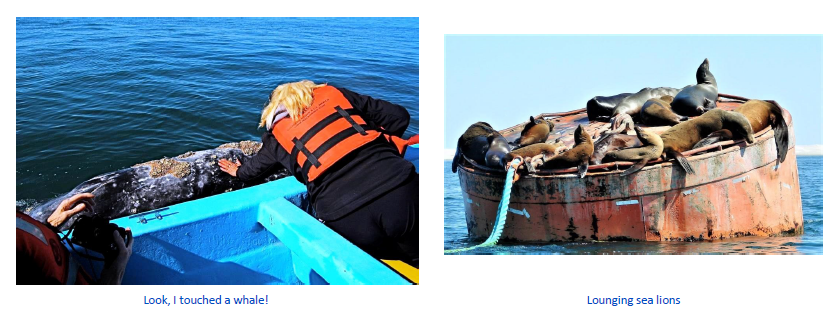
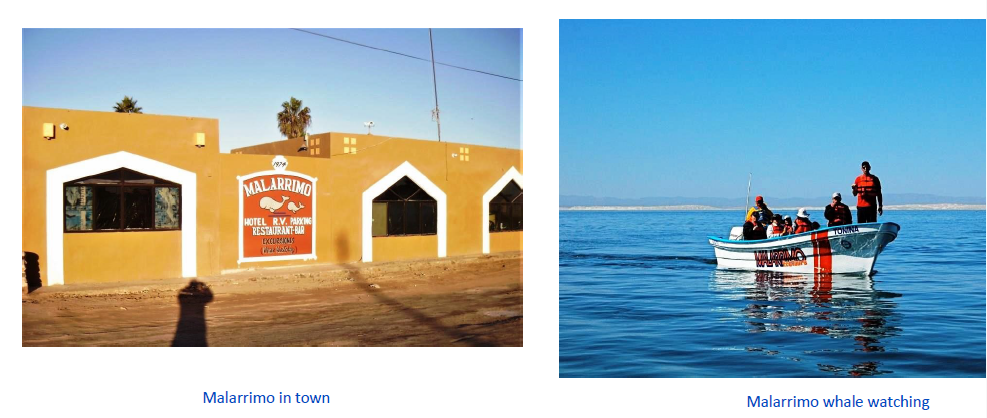
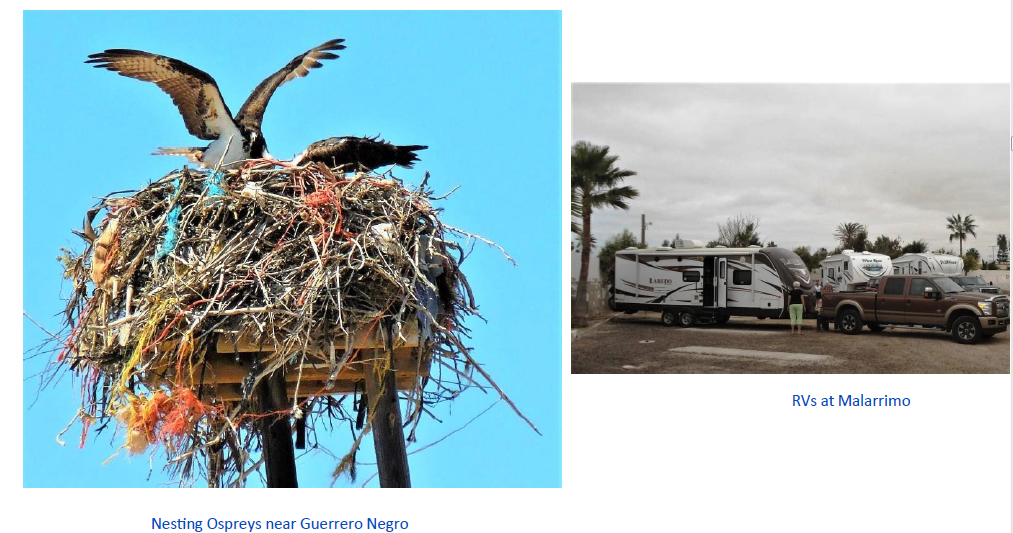
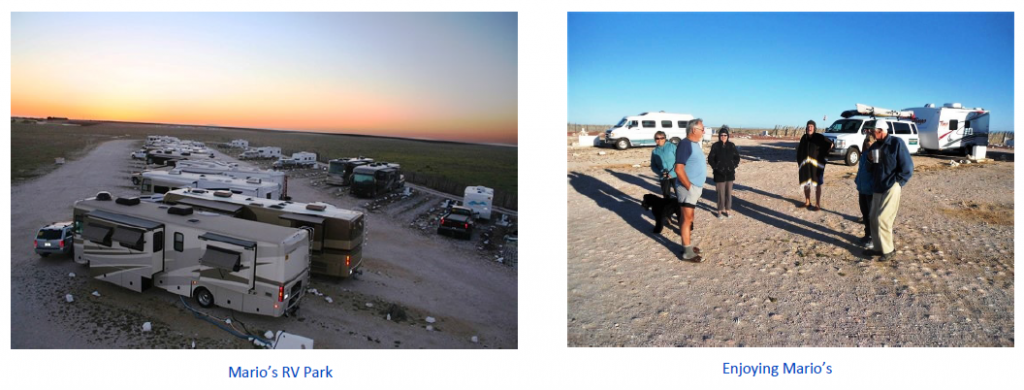
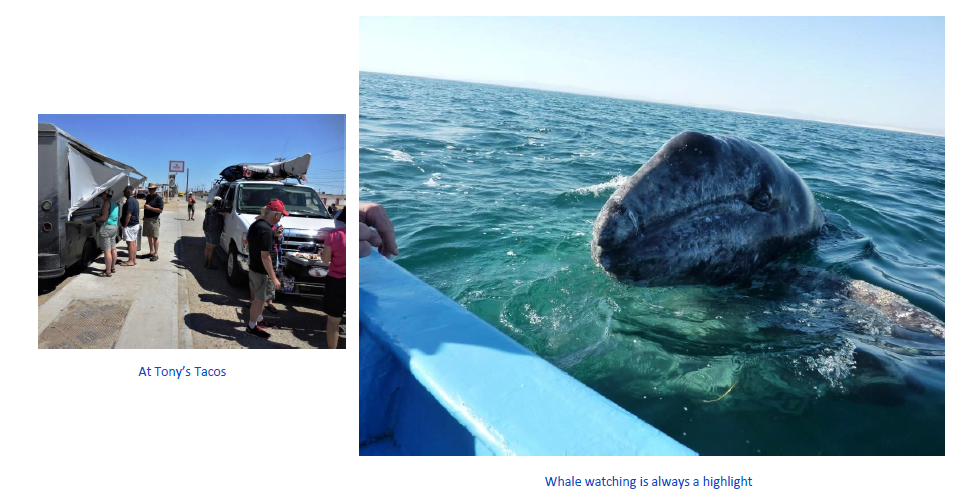
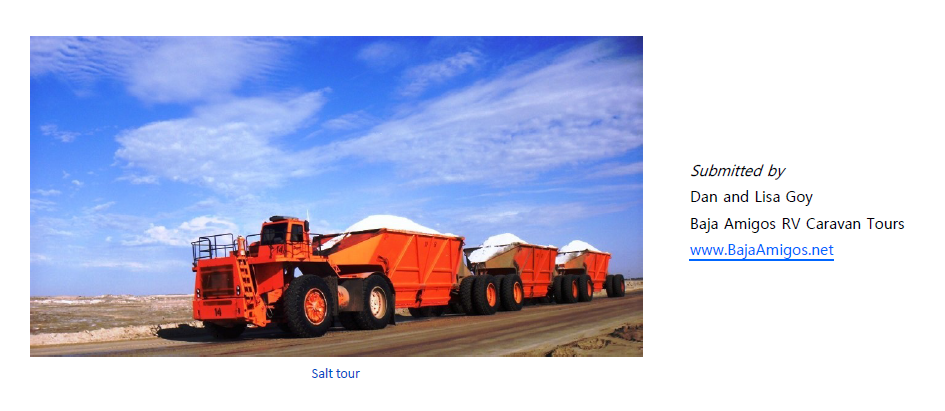
The full edition or view it online
Dan and Lisa Goy, owners of Baja Amigos RV Caravan Tours, have been making Mexico their second home for more than 30 years and love to introduce Mexico to newcomers.
